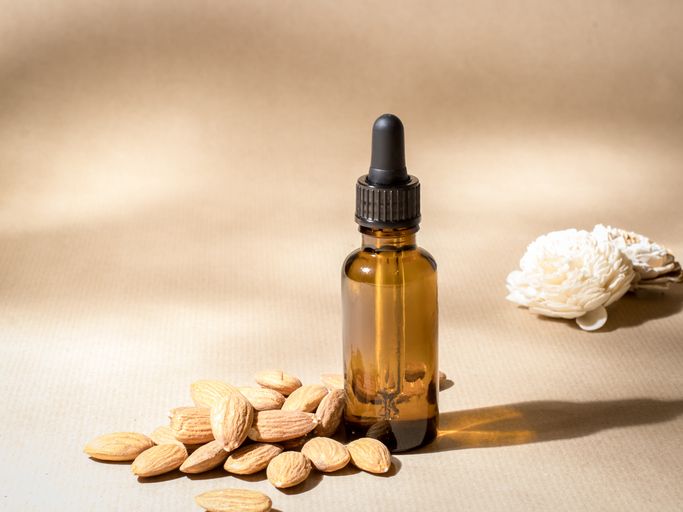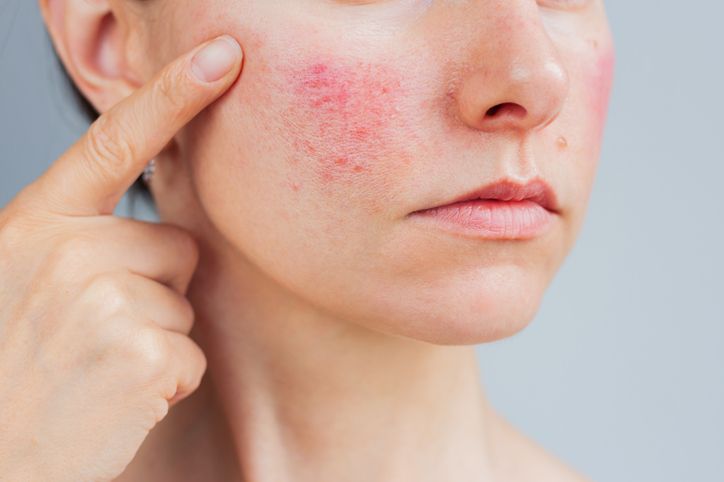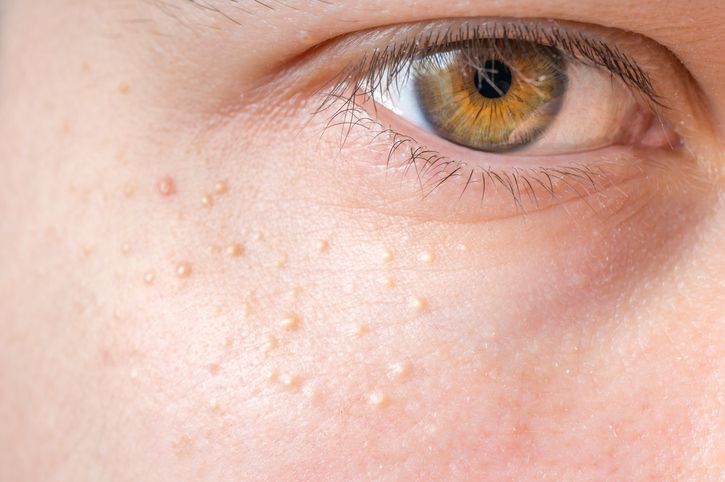- Home
- Trend
- Weight Loss Strategies
- Acne Tips
- Hair Health Information
- Blemish Removal Tips
- Acne Scar Removal Tips
- Muscle Building Techniques
- Intimate Care Tips
- Postpartum Intimate Care
- Eye Bags Wiki
- Tips for Face Slimming
- Secret of Permanent Hair Removal
- Breast Enlargement Tips
- Cure to Snoring
- Marionette Lines
- Skin-Tightening Secrets
Saw palmetto has become a popular ingredient in hair growth supplements in recent years, with many individuals suffering from hair loss incorporating it into their regimens. Similar to caffeine, saw palmetto is believed to effectively improve and control male pattern baldness, which has led to the creation of saw palmetto-infused hair growth serums, hair treatments, shampoos, and oral supplements. Although saw palmetto does not contain medicinal ingredients, does this mean it's suitable for everyone? Does saw palmetto have any side effects? Does it actually work effectively for hair growth? If you're curious to learn more about the effects of saw palmetto on hair growth, don't miss our comprehensive guide on saw palmetto!
What is Saw Palmetto?

Many individuals dealing with hair loss may have heard of saw palmetto. Recently, numerous hair growth products have included saw palmetto to enhance their hair growth effects. But for those who have tried it, do you know what exactly saw palmetto is?
Saw palmetto (Serenoa repens) is a plant belonging to the palm family, primarily found in North America. The plant typically grows to about 3 meters in height, has fan-shaped leaves, and produces oval-shaped fruits that resemble chestnuts in appearance and color.
While saw palmetto is often touted for its hair growth benefits, the extract used in hair products comes from the fruit of the plant. Since the 1970s, there has been extensive research into the effects of saw palmetto extract on hair growth and hair loss. Studies have shown that saw palmetto extract contains fatty acids, plant sterols, palmitic acid, tannins, carotenoids, and other compounds. Multiple studies indicate that the key ingredients in saw palmetto extract that can effectively combat male pattern baldness are fatty acids and natural sterols.
Is Saw Palmetto the Best Remedy for Hair Loss? Understanding Common Types of Hair Loss in Women

Upon hearing that saw palmetto can help with hair loss, are you eager to give it a try? But before using saw palmetto, do you fully understand the type of hair loss you're dealing with?
Women's Hair Loss Type 1: Postpartum Hair Loss
Many women are curious whether saw palmetto can improve postpartum hair loss. But first, let's explore what causes postpartum hair loss. Postpartum hair loss is common among women, with most experiencing some degree of hair shedding after childbirth. The most frequent symptoms include a receding hairline, thinning on the crown, M-shaped hairline, and a decrease in overall hair volume. Two main factors lead to postpartum hair loss: First, during pregnancy, female hormones significantly increase, which prolongs the hair growth cycle, leading many pregnant women to experience thick and shiny hair. However, once pregnancy ends and hormone levels return to normal, the hair growth cycle resumes its usual pace, combined with blood loss during childbirth, which depletes nutrients necessary for hair growth, ultimately leading to hair loss.
Women's Hair Loss Type 2: Male Pattern Baldness
When it comes to saw palmetto, male pattern baldness is often discussed. Male pattern baldness occurs when male hormones weaken the hair follicles, leading to hair loss, a condition commonly seen in men. However, many women also exhibit symptoms of male pattern baldness, such as thinning hair, widening part lines, a receding hairline, or even progression into a bald spot or crown thinning.
The cause of male pattern baldness is the conversion of testosterone into dihydrotestosterone (DHT) in the body, which then attacks the hair follicles that carry the genetic predisposition for hair loss, typically on the forehead and crown. This weakens the hair follicles, which gradually lose their ability to grow hair, leading to hair loss.
Women's Hair Loss Type 3: Stress-Induced Hair Loss
Stress-induced hair loss is common among those who are busy at work or unable to relieve stress, and saw palmetto is sometimes used to help improve stress-related hair loss. This type of hair loss can develop into seborrheic alopecia, with common symptoms like increased scalp oil, dandruff, thinner hair, and decreased volume.
Stress-induced hair loss is closely tied to emotional pressure. When stress is prolonged, the scalp muscles remain tense, hindering blood circulation, which makes it harder for hair follicles to absorb nutrients necessary for hair growth, resulting in weakened follicles. Additionally, stress is a major contributor to increased scalp oil production, which can block hair follicles and lead to scalp eczema, dandruff, and thinning hair, eventually causing hair to fall out.
Women's Hair Loss Type 4: General Thinning
As women age, many experience thinning hair across the entire scalp, known as generalized thinning. Saw palmetto is sometimes used to address this issue. General thinning can cause a reduction in hair volume on the crown, with the part line widening and gradually leading to thinning or bald spots.
As women age, metabolic rates naturally slow down, reducing the delivery of nutrients to the scalp and hair follicles. Additionally, the decrease in female hormones increases the opportunity for male hormones to weaken the hair follicles, making middle-aged women especially prone to generalized thinning after menopause.
免費體驗
F8 Hair Regrowth Treatment
1 Minute Self-Registration
Date should not be before minimal date
The Effects of Saw Palmetto: Is It Just for Male Pattern Baldness?
As mentioned earlier, saw palmetto is most commonly associated with improving male pattern baldness, which has made it a popular new ingredient in hair growth products. While its ability to improve hair growth and reduce hair loss is widely recognized, did you know that saw palmetto also has other health benefits?
Saw Palmetto Benefit 1: Treatment and Prevention of Prostate Diseases
While the effects of saw palmetto on prostate diseases are not relevant to women, it is important to note that saw palmetto was initially used to treat various prostate issues. Prostate diseases are common among middle-aged men. If the prostate becomes enlarged or develops benign prostatic hyperplasia, it can lead to various problems, including prostatitis and prostate cancer.
Prostate diseases are significantly influenced by male hormones, and saw palmetto's ability to reduce the levels of male hormones in the body has been linked to improvements in these conditions. Male hormones, particularly DHT, can cause prostate enlargement, resulting in symptoms like frequent urination, difficulty urinating, weak urine flow, and nighttime urination. In more severe cases, it can lead to blood in the urine, urinary tract infections, and kidney stones.
Prostate cancer is also a common type of cancer in men, and due to its rising incidence and high risk of metastasis, treatments for prostate cancer are under continuous scrutiny. Saw palmetto, which can reduce male hormone levels, has been used in several studies aimed at treating and preventing prostate cancer. Some studies have shown that continuous consumption of saw palmetto extract can reduce prostate enlargement, promote the death of cancer cells, and improve symptoms.
However, there is still insufficient medical evidence to confirm that saw palmetto can fully treat, improve, or prevent prostate diseases, and several studies indicate that its effects vary from person to person. Therefore, if a man suspects a prostate-related condition, it is advisable to consult a doctor for a detailed examination.
Saw Palmetto Benefit 2: Improving Male Pattern Baldness
The primary cause of male pattern baldness is DHT. So, why does saw palmetto help improve the symptoms of male pattern baldness?
DHT is formed when an enzyme called 5α-reductase converts testosterone into DHT. Saw palmetto has been shown to inhibit the activity of 5α-reductase, thereby reducing the production of DHT. This decrease in DHT production significantly reduces the likelihood of DHT attacking the hair follicles, allowing hair to remain strong and healthy, with a decreased chance of hair loss.
Numerous studies have indicated that saw palmetto can inhibit the concentration of 5α-reductase and reduce DHT levels in the body. Some statistics suggest that after using saw palmetto extract for a certain period, improvements are seen in male pattern baldness, particularly for hair loss along the forehead and crown. Although saw palmetto has yet to be fully endorsed by the medical community for treating hair loss, some studies show positive results, indicating that saw palmetto may be effective in treating male pattern baldness and other hair loss issues.
Saw Palmetto Benefit 3: Improving Acne
Many women may not realize that acne and pimples are often linked to male hormones. Saw palmetto can help reduce the levels of male hormones in women, which may improve acne and pimples. One of the causes of acne and pimples is the increased secretion of sebum, driven by male hormones. This excess sebum can clog pores, leading to inflammation and the formation of acne, pimples, and blackheads. By reducing male hormone levels, saw palmetto can inhibit sebum production. Some studies targeting saw palmetto for acne treatment have shown significant improvement in acne and pimples after women took saw palmetto extract.
Saw Palmetto Side Effects: What You Should Know
The popularity of saw palmetto among people suffering from hair loss is largely due to its natural ingredients. Because saw palmetto extract comes from a plant, it is often considered healthier for the body than other hair loss medications and is believed to have fewer side effects.
Saw palmetto works by lowering male hormone levels in the body, and generally, it does not cause significant side effects in women. However, some individuals who have used or taken saw palmetto may experience gastrointestinal discomfort, constipation, diarrhea, headaches, dizziness, or fatigue. For men, there is a higher likelihood of experiencing side effects, including reduced libido, decreased sexual function, and erectile dysfunction.
What Should You Be Aware of When Using Saw Palmetto?
Although saw palmetto is derived from a plant, it is not suitable for everyone, nor should it be used at any time without consultation. Since saw palmetto has certain effects, it may interact with other medications or be unsuitable for certain individuals. Before using or taking saw palmetto, it is crucial to consult with a healthcare professional.
Consideration 1: Do Not Use with Other Hair Growth Medications
Although saw palmetto may help improve hair loss, it is not recommended to take it in conjunction with other hair growth medications. Common hair loss medications like finasteride and minoxidil work similarly to saw palmetto by inhibiting DHT production to treat male pattern baldness and other hair loss issues. Since DHT is a male hormone, taking multiple medications that suppress it may have negative effects on the body.
Consideration 2: Avoid Taking with Blood Thinners
Saw palmetto is also known for its blood-thinning properties, which can slow down blood clotting. Therefore, individuals taking blood thinners or anti-platelet medications, such as aspirin, warfarin, or ibuprofen, should avoid using saw palmetto.
Additionally, it is recommended to stop taking saw palmetto at least two weeks before undergoing any surgical procedure to avoid potential complications, such as difficulty healing wounds or excessive bleeding during surgery.
Consideration 3: Avoid Taking with Birth Control Pills
Saw palmetto is a substance that reduces male hormone levels, while birth control pills contain high levels of female hormones. Taking both at the same time may reduce the effectiveness of birth control pills. Therefore, it is advised to avoid combining saw palmetto with birth control pills or any medications containing estrogen.
Consideration 4: Pregnant or Breastfeeding Women or Those with Hormonal Disorders Should Avoid Use
Pregnant women, breastfeeding mothers, and those with hormonal disorders should be cautious when using saw palmetto, as they need to carefully regulate hormone levels. Disruptions to hormone levels may affect the fetus, milk production, or the individual's condition. Although saw palmetto helps reduce the conversion of male hormones, it is best to consult a healthcare professional before using saw palmetto-related products in these cases.
免費體驗
F8 Hair Regrowth Treatment
1 Minute Self-Registration
Date should not be before minimal date
Other Hair Growth Ingredients and Nutrients Besides Saw Palmetto
In addition to saw palmetto, there are other nutrients and ingredients worth noting that can help with hair growth. For example, caffeine has recently been compared to saw palmetto because both are derived from natural plant ingredients. Iron and zinc are also frequently mentioned as nutrients that can help with hair growth and nourishment. Let’s take a look at these common hair growth ingredients and nutrients and how they differ!
Hair Growth Ingredient 1: Iron and Zinc
Besides saw palmetto, you’ll often see iron and zinc mentioned in articles about hair growth foods. These two nutrients are essential for healthy hair growth. Numerous medical studies have shown that iron is related to chronic telogen effluvium (hair loss), and a lack of iron can lead to increased hair loss. Zinc, on the other hand, is associated with alopecia areata. A higher intake of zinc helps prevent hair loss. While generally, women don’t need to supplement iron and zinc specifically, they can still get these nutrients through their daily diet by eating foods like oysters, cashews, beef, pumpkin seeds, and black fungus.
Hair Growth Ingredient 2: Vitamin E
Vitamin E is another frequently mentioned nutrient for hair growth. Unlike saw palmetto, vitamin E doesn’t promote hair growth, but rather helps maintain the health of existing hair. Some studies also indicate that vitamin E can maintain scalp health and reduce scalp problems. Women don’t need to specifically supplement vitamin E, as they can get it by eating more nuts, spinach, kiwifruit, avocados, egg yolks, and soybeans.
Hair Growth Ingredient 3: Caffeine
Caffeine is another ingredient often compared to saw palmetto because both have been found to inhibit 5-alpha reductase and reduce DHT levels, thus reducing the likelihood of hair follicles being attacked and lowering the risk of male pattern baldness. Many caffeine-based shampoos or hair growth tonics are available on the market. Given that both caffeine and saw palmetto have similar effects, how should you choose between them?
At present, there isn’t sufficient evidence regarding the effectiveness of caffeine shampoos and saw palmetto shampoos, and caffeine shampoos may also cause side effects. Saw palmetto shampoos may not be suitable for everyone either, so the effectiveness of both in improving hair loss remains "up in the air."
Hair Growth Ingredient 4: Finasteride
Finasteride is a medication commonly used in oral form for treating hair loss. Its mechanism of action is quite similar to saw palmetto, as both inhibit the production of DHT to treat male pattern baldness. However, some studies indicate that saw palmetto only targets common hair loss areas in male pattern baldness, such as the forehead, crown, and top of the head, while finasteride is more effective in improving overall hair loss. However, finasteride is a pharmaceutical ingredient, and for now, it is only available for men, not women, as a treatment for hair loss.
Hair Growth Ingredient 5: Minoxidil
Minoxidil is another hair growth medication often compared to saw palmetto. It is commonly added to hair growth liquids and lotions in concentrations of 2% and 5%, with 2% typically recommended for women. The exact mechanism of how minoxidil helps with male pattern baldness and other hair loss issues is still unclear, but it may be related to male hormones. Many users have reported positive effects from using minoxidil-based products, though stopping treatment may result in hair loss returning. While saw palmetto-based products have also been proven to have some efficacy in treating hair loss, their effects are still not as powerful as those of minoxidil.
Saw Palmetto Hair Growth Lotion vs Minoxidil Hair Growth Lotion: How to Choose?
Currently, there are many topical hair growth products on the market that incorporate various ingredients, and saw palmetto is one of them. Extracted from a plant, saw palmetto is often considered less likely to cause side effects compared to hair growth lotions with added pharmaceutical ingredients. It is believed to be gentler on overall health.
However, it is important to note that saw palmetto has not been conclusively proven to improve or treat hair loss. While some individuals may experience an improvement in hair shedding symptoms with saw palmetto, this ingredient has not been approved by the U.S. Food and Drug Administration (FDA) as an effective treatment for hair loss. As such, there is a lack of solid evidence regarding its safety and effectiveness. Therefore, there may still be no improvement in hair loss, and some may even experience side effects. For treating hair loss, it is recommended to consult a professional hair loss doctor and decide whether to use a hair growth lotion containing FDA-approved ingredients like minoxidil, depending on the situation.
Personal Test: Saw Palmetto Hair Growth Lotion vs Minoxidil Hair Growth Lotion vs Caffeine Hair Growth Lotion
Hair growth and preventing hair loss are crucial steps! Since I wash my hair every two days, people with seborrheic hair loss often need to wash their hair daily. After washing, it's common to encounter problems like an oily or dry scalp. If left untreated, not only will hair loss continue, but dandruff may also appear. After washing my hair, I always use a hair growth lotion to activate my scalp, moisturize it, and stimulate hair growth, and I’m sure I’m not the only one who does.
I’ve personally tested three of the most popular hair growth lotions on the market!
1. Saw Palmetto Hair Growth Lotion
Saw palmetto is a plant-derived extract, so there are many ways to use it. Besides hair growth lotions, you can find shampoos, essential oils, and more! Since my shampoo focuses on preventing hair loss, I decided to try saw palmetto for hair growth. After two weeks of use, I have to say I was a bit disappointed. While it noticeably moisturized my scalp (especially since I sleep in an air-conditioned room, which can dry out my scalp), I didn’t see much other effect. The amount of hair I lost while brushing in the morning was still the same! I read online that saw palmetto helps slow down hair loss but doesn’t really promote new hair growth. Since I didn’t feel any improvement in preventing hair loss, I have no hope for its hair-growing effects.
Additionally, there’s a slight inconvenience when using saw palmetto hair growth lotion: it’s not recommended to use it with blood-thinning medications because saw palmetto also has blood-thinning properties. If you mix the two, it may delay wound healing. For the two weeks I used saw palmetto, I was extra cautious not to get injured or take painkillers… it was a bit troublesome and might not be suitable for me since I didn’t see any results in either stopping hair loss or promoting hair growth.
2. Minoxidil Hair Growth Lotion
Minoxidil is probably the go-to product for anyone experiencing hair loss. It’s one of the three FDA-approved methods for preventing hair loss, along with hair growth medication and low-level laser therapy (LLLT). Minoxidil is easy to get, and from reading online forums, people who’ve used it often mention a hair loss shedding phase. So, I decided to start with the 2% concentration just to be safe...
And indeed, I experienced a crazy shedding phase. The shedding phase with minoxidil is no joke—it’s intense. I had to apply it every morning and night, and every time I combed or washed my hair, I noticed significant hair loss. There was hair everywhere—on the floor, comb, and my clothes—but not much left on my scalp...
From what I read online, the shedding phase with minoxidil varies, so I thought I’d continue for a month... but it didn’t work out. My hair thinned so much that colleagues and friends started asking why my hair looked so greasy and thin, almost as if I hadn’t washed it. I looked awful!
I pushed through for a little over two weeks but had to stop. I was afraid I’d end up with a bald spot before my hair even had a chance to grow back, and there was no guarantee it would grow back at all. I was genuinely scared my hair wouldn’t recover, so I stopped. I think many people have experienced the same thing, right?
3. Caffeine Hair Growth Lotion
I’m sure many people have tried caffeine shampoo, but caffeine-based hair growth lotions also have a lot of positive feedback. Caffeine is said to promote blood circulation, and since it’s so widely available, caffeine hair growth lotions are typically more affordable and great value for money!
Of the three, I was actually able to stick with caffeine hair growth lotion. While its main effect is promoting blood circulation, the one I used also contains menthol and other anti-inflammatory, oil-controlling ingredients. It leaves a cool sensation rather than a burning hot one, and it’s quite moisturizing.
Does it help with hair loss and regrowth? Honestly, I’m not sure, but I feel more comfortable using it. I think every little bit helps! Plus, I sometimes notice baby hairs along my parting, so I’m hoping the caffeine lotion will help these tiny hairs grow stronger. Given the great value and its oil-controlling and moisturizing effects, I’ll continue using it, even if it’s just for peace of mind.
However, whether it’s saw palmetto, minoxidil, or caffeine hair growth lotion, none of these are as effective as medical laser hair treatments! Why? Let’s break it down below!
Medical Laser Hair Growth is More Effective than Saw Palmetto! Register Now for a Free Hair Growth Treatment Experience!
Indeed, saw palmetto has been shown in some studies to help improve hair loss. However, due to a lack of solid evidence and data, it is not yet recognized as an effective treatment for hair loss. If you want to address hair loss without taking medication, there’s another method that can effectively treat hair loss with no invasive procedures or pain, and it doesn’t put any strain on your body!
Medical laser hair growth technology has been proven in recent years to treat hair loss. Medical-grade soft laser technology can penetrate deep into the scalp, enhance follicle health, and activate follicles to grow hair again! Perfect Medical F8’s hair growth treatment uses 650nm LLLT low-energy laser technology to activate hair follicles, promote capillary formation, and rejuvenate the cells in the follicles.
The Perfect Medical F8 Hair Regrowth Treatment also deeply cleanses any residual chemicals from the scalp, balances excess oil secretion, and restores vitality to the hair, improving blood circulation in the scalp. This increases nutrient absorption by hair follicles, accelerating hair growth, and within a short time, you’ll notice thicker new hair and healthier, more vibrant hair.
If you want to improve hair loss and get longer hair quickly, forget about unproven saw palmetto products. Medical laser hair treatment doesn’t require medication or injections, making it a safer option! Don’t hesitate—register now to get a free trial of the Perfect Medical F8 Hair Regrowth Treatment and experience the safe and effective hair growth technology. Say goodbye to hair loss once and for all!
Try Now: Perfect Medical F8 Hair Regrowth Treatment免費體驗
F8 Hair Regrowth Treatment
1 Minute Self-Registration
Date should not be before minimal date
FAQ

Why can saw palmetto improve male pattern baldness?
Male pattern baldness occurs when male hormones in the body are converted into dihydrotestosterone (DHT), which then attacks hair follicles that are genetically prone to hair loss, typically located at the forehead and crown. This weakens the hair follicles, leading to thinning hair, widening of the hairline, and a receding hairline, which can eventually result in a bald spot or even a completely bald scalp. Saw palmetto has been shown to inhibit the activity of 5-alpha reductase, reducing the chances of DHT attacking hair follicles. However, saw palmetto has not yet been fully recognized by the medical community as an effective treatment for hair loss.
How much saw palmetto should be taken daily to improve hair loss?
Many people are interested in saw palmetto hair products because it is extracted from plant-based ingredients, which are perceived as being gentler on the body compared to pharmaceutical hair loss treatments. However, just because saw palmetto is plant-based does not mean it should be consumed excessively, and using more does not improve its effectiveness in treating hair loss. Generally, it is recommended that adults take 160 to 320 milligrams of saw palmetto per day. Most saw palmetto supplements on the market contain 160 milligrams per capsule, so one to two capsules per day is usually sufficient.
Can saw palmetto cause side effects?
Saw palmetto is popular due to its natural properties. The mechanism by which saw palmetto improves hair loss is by lowering the levels of male hormones in the body. Generally, it does not cause significant side effects for women. However, some individuals have reported gastrointestinal issues, constipation, diarrhea, headaches, dizziness, and fatigue after using saw palmetto. Men may experience a higher chance of side effects, including reduced libido, decreased sexual performance, and erectile dysfunction.
Is saw palmetto hair tonic or minoxidil hair tonic better for hair loss?
While saw palmetto has been shown to improve hair loss in some individuals, saw palmetto extract has not been proven by the U.S. Food and Drug Administration (FDA) as an effective treatment for hair loss. It lacks the necessary safety and efficacy evidence. Therefore, if you need to treat hair loss, it is best to consult a professional hair loss specialist. Depending on the situation, they may recommend using minoxidil, which is FDA-approved for hair loss.
Can postpartum mothers use saw palmetto to improve hair loss?
Postpartum hair loss is the most common type of hair loss in women, often characterized by a receding hairline, thinning at the crown, a M-shaped forehead, and overall hair thinning. Although saw palmetto is plant-based, postpartum mothers who are breastfeeding should use it cautiously. Saw palmetto has the effect of lowering male hormones, which may impact hormone levels and could potentially affect milk production. Therefore, postpartum mothers should consult a professional healthcare provider before using any saw palmetto-related products.









